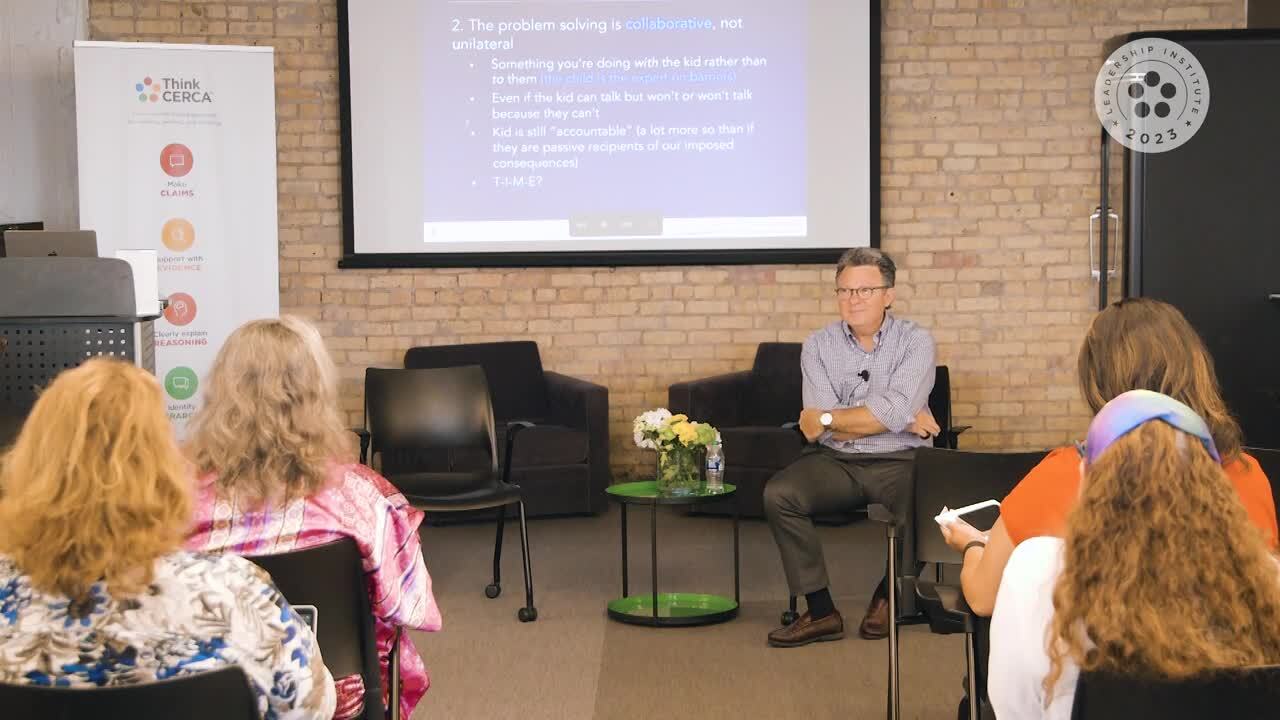
5 Ways to Change Your Lens Around Kids Behavior and Collaboration (P1)
Addressing behavioral challenges in students is crucial to ensuring a productive learning environment. However, traditional approaches often fail to understand and resolve the root problems causing these behaviors. At ThinkCERCA’s 2023 Leadership Institute, we had the pleasure of having Dr.Ross Greene, child psychologist and New York Times bestseller author of Raising Human Beings, break down child behavior issues into one simple answer: “Ask the kid.”
Watch the full video of Dr. Greene’s advocacy for a collaborative and proactive approach here.
There are five key paradigm shifts to changing your lens on behavior challenges:
1. Emphasize solving problems rather than modifying the behaviors.
When caretakers see behavioral concerns, they often focus on the behaviors rather than the problems causing them. Rather than modifying those behaviors, we need to understand consequences are not problem-solving strategies.
What causes these problems? Unsolved problems, or in other words, unmet expectations, result in concerning behaviors. These behaviors are stress responses or the signals by which a child exhibits that they are having difficulty meeting expectations.
Dr.Greene has two categories of signals: lucky and unlucky. Lucky behaviors such as whining and sulking are more likely to elicit empathy and support. Unlucky signals, such as screaming and hitting, result in adverse consequences like detention or suspension. Both communicate the same thing: the child has been struggling to meet expectations for a long time.
2. Solve the problem collaboratively, not unilaterally.
As caretakers, based on our training or experience, we solve problems unilaterally. When something is not working, no one has more critical information than the kids themselves.
Here, Dr. Greene emphasizes again the importance of “asking the kids” to engage them in solving the problems collaboratively. Rather than talking about their concerning behaviors with questions such as “Why did you do that?” educators should focus on the unmet expectations they have been struggling with.
3. Problem-solving needs to be proactive, not reactive.
Dr. Greene advises against consequences as they are reactive approaches that are not only not able to hold a child accountable, nor are they able to address what is getting in the way of meeting expectations. Consequences are a behavioral modification strategy based on the belief that a child is poorly motivated when they lack the skills to respond more adaptively to problems and frustrations.
Caretakers should dedicate 90% of their time to proactively identifying and resolving potential issues, reserving 10% for unforeseen problems. Once the lagging skills and unsolved problems are recognized, interventions can be proactive.
Watch the clip below ⤵️.

4. Kids do well if they can.
The opposing mentality says kids do well if they want to, but that is not the case. Adults often times associate kids with challenging behavior issues as attention-seeking, manipulative, and coercive. These are assumptions that happen when we do not consult the kids themselves. But the case is that they are lacking the necessary skills to tackle the unsolved problems.
What are those necessary skills? Emotion regulation, problem-solving, frustration tolerance, flexibility/adaptability. By solving problems collaboratively with children, they can hone these skills so they can respond to problems and frustrations adaptively.
5. Doing well is preferable.
Kids much prefer to be doing well. When a child displays concerning behavior, caretakers typically teach a substitute behavior and offer rewards for its display. The child then seeks positive reinforcement and changes their behavior, while the underlying issue remains unaddressed. Prioritize the issue.
Stay tuned for part 2 where we will dissect Dr. Greene's suggested options for handling unsolved problems. Be sure to check out the full video and you can find the video slides here.

